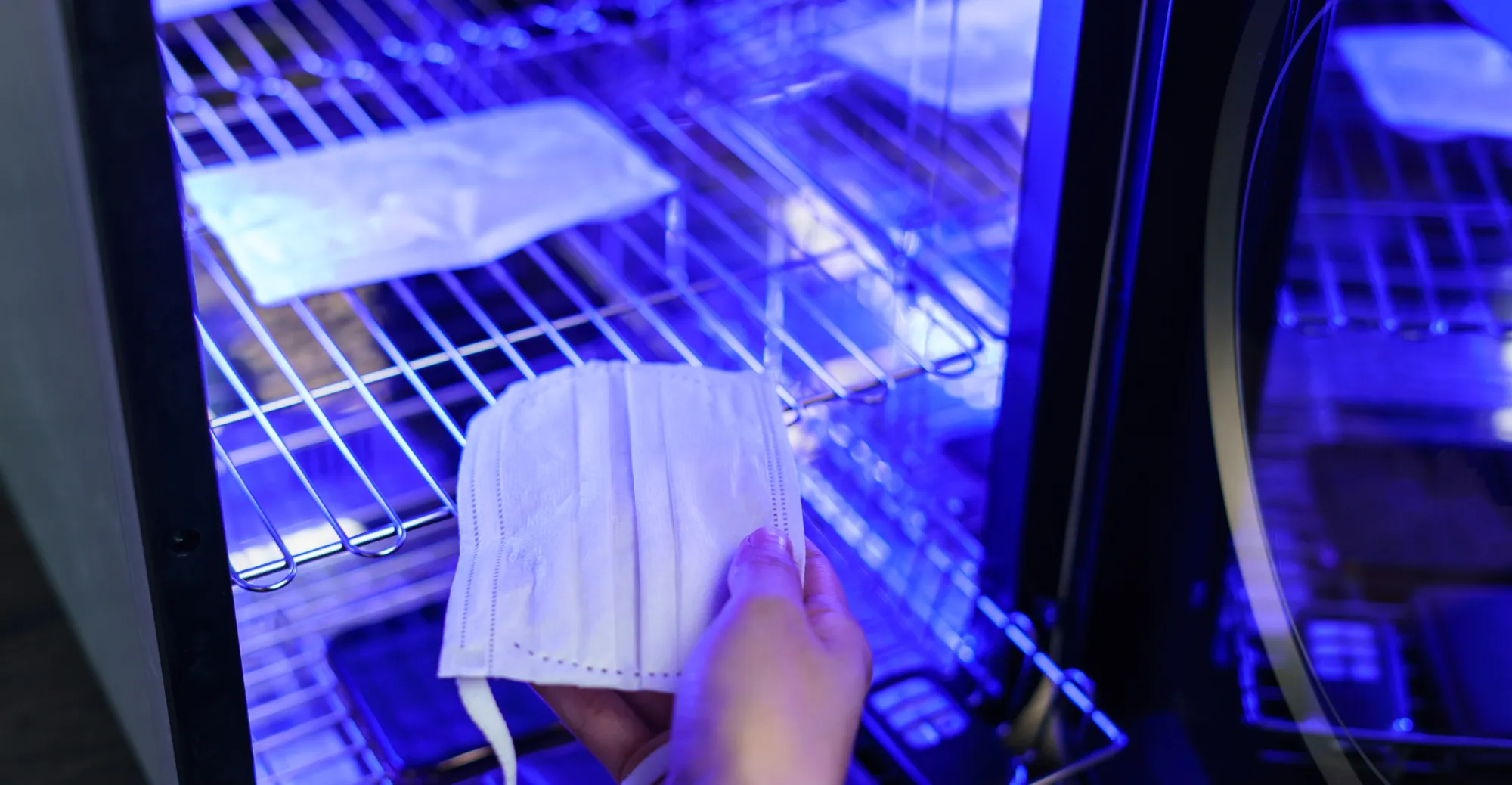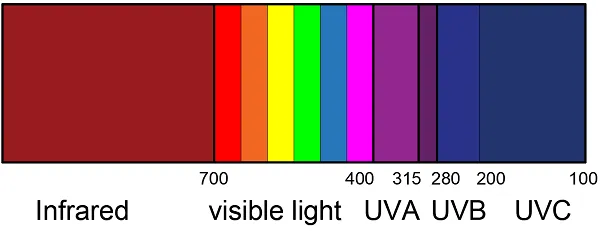
All the things you need to know about UV air purifiers
All the things you need to know about UV air purifiers
– by Jaco Heinen, 05/06/20
In this article Jaco Heinen explains how air is purified by using UV light. We dive deeper in the effectiveness of UV light; how safe it is and if it can be used in the battle against the coronavirus.
How does a UV air purifier work?
A UV purifying system – also referred to as ultraviolet germicidal irradiation (UVGI) – uses ultraviolet energy to disable viral, bacterial and fungal organisms. A bombardment of highly energetic photons damages the organism’s DNA so that it can no longer reproduce itself.
Light and all other forms of electromagnetic radiation are made of elementary particles called photons. These are particles which travel in the form of waves. Visible light has wavelengths between 750 and 400 nanometres and is just a small portion of that spectrum. The smaller the wavelength, the more energy the photons contain.

Ultraviolet energy is electromagnetic radiation with a wavelength shorter than that of visible light. The UV portion of the electromagnetic spectrum has wavelengths between 400 and 100 nanometres and is further divided into:
- UVA, wavelengths of 400 to 315 nanometre;
- UVB, wavelengths of 315 to 280 nanometre;
- UVC, wavelengths of 280 to 100 nanometre.
It is the UVC light that has enough energy to damage the structure of nucleic acids and proteins at the molecular level. The most important of these is DNA, which is responsible for cell replication. An organism that cannot reproduce is no longer capable of causing disease.
How effective are UV air purifiers?
UVGI effectiveness depends on several factors, such as the UV dose delivered to the microorganisms, the length of time that the organism is exposed and the strength of the electromagnetic radiation or irradiance.
Exposure time in a ducting system is in the order of seconds, maybe fractions of seconds. Air is moving rapidly through a duct so the irradiance must be high enough to provide the necessary dose to inactivate the microorganisms in this small amount of time.
Are UV air purifiers safe to use?
When it comes to UV safety there are two factors to consider: direct exposure to UV light and the production of ozone.
Sunlight contains a broad spectrum of electromagnetic radiation including the three types (UVA, UVB and UVC) of UV light. UVA wavelengths make up most of the UV rays which reach the earth’s surface. These rays can penetrate deeply into our skin, and are thought to cause most of our wrinkles, skin ageing and dark spots.
Then there is the more ambivalent UVB light, responsible for the formation of vitamin D in our body. Long exposure will cause deformation of our DNA, resulting in sunburn and eventually skin cancer.
UVC waves coming from the sun have such short wavelengths that they are all filtered out by the earth’s atmosphere before they even reach the surface. But with our UV purifying system that is another story.
As the energy these waves contain is much higher than the other waves, they can cause damage in a far faster way then the other two waves. On the other hand, the small frequency or wavelength makes it difficult to penetrate our skin and eyes so most will be reflected. Direct contact should, nonetheless, be avoided.
Then there is the matter of ozone. UVC waves are capable of breaking oxygen (O2) into two single parts that, when they later combine, can produce ozone (O3). Breathing in ozone damages our lungs so most UV bulbs are given a special coating to counter this effect.
UVC against Covid-19
Now the question which is on everyone’s mind; can UV purifying systems be used against Covid-19? Short answer: we don’t know yet as no research has been completed into how UVC affects coronavirus. There are, however, studies showing that UVC can be used against other coronaviruses such as SARS.
UVC is already being deployed in China where buses are being lit with UVC light to clean them while UV-emitting robots clean floors in hospitals. That said, more research is required before a definitive answer can be given as to whether this can be a solution in the fight against Covid-19.
What we can certainly offer already are answers to any questions you have about how to install a UV air purifying system or the best position to install a UV bulb.
Jaco Heinen | Service & Maintenance Manager
Jaco Heinen has been working at Heinen & Hopman for over eight years. He became the Service & Maintenance manager four years ago and manages the service contracts for maritime HVAC installations worldwide.